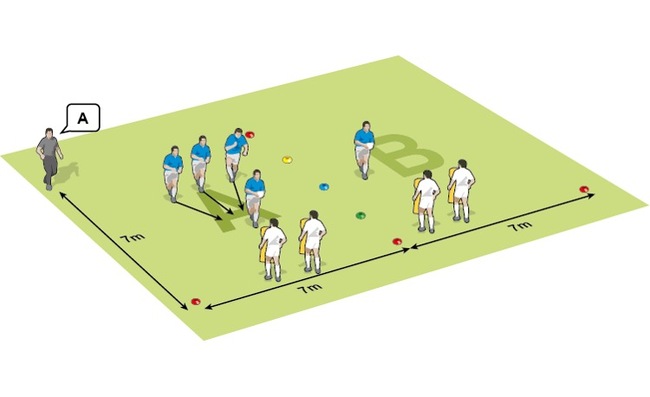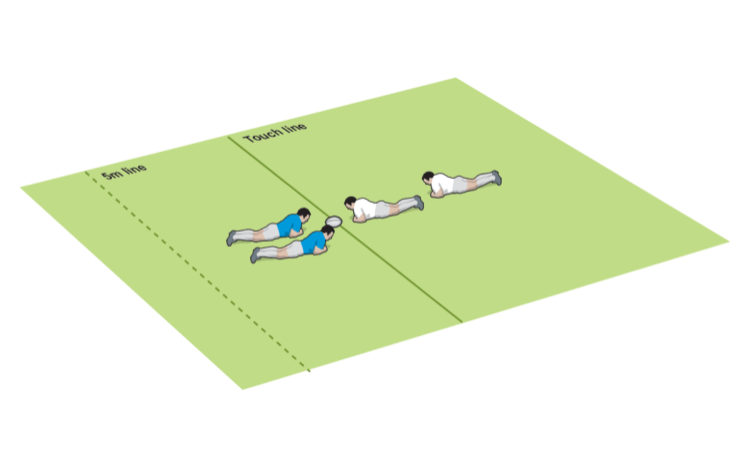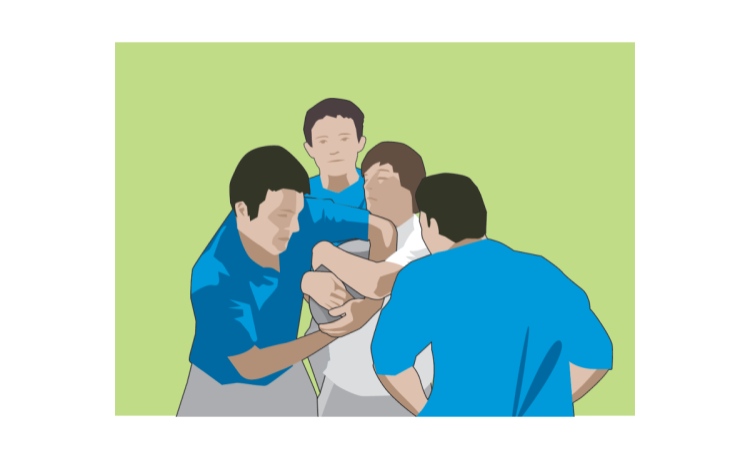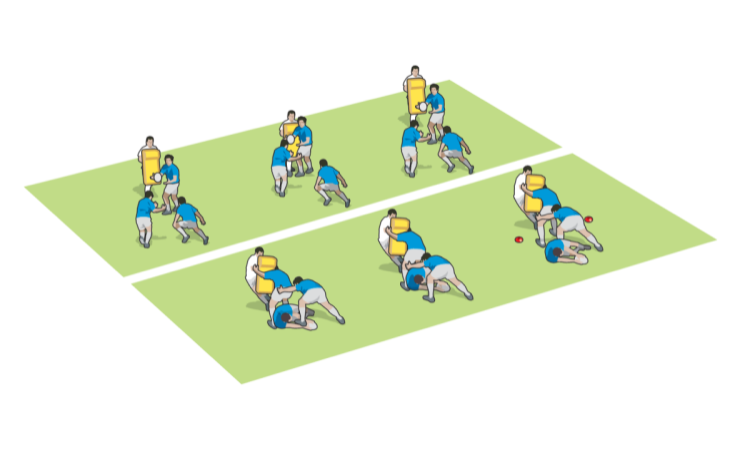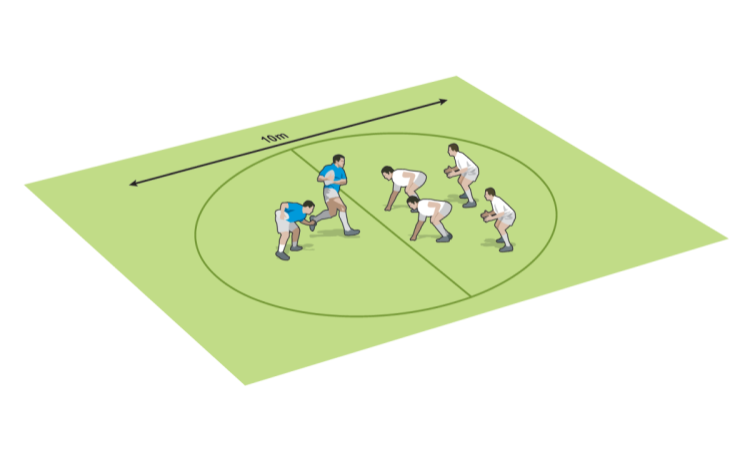You are viewing
1 of your 2 free articles
VIDEO: Sharper ruck decisions
Rucking & Maulingby Graeme Forbes
Practise your tackle and post-tackle decision-making in a game-related activity.
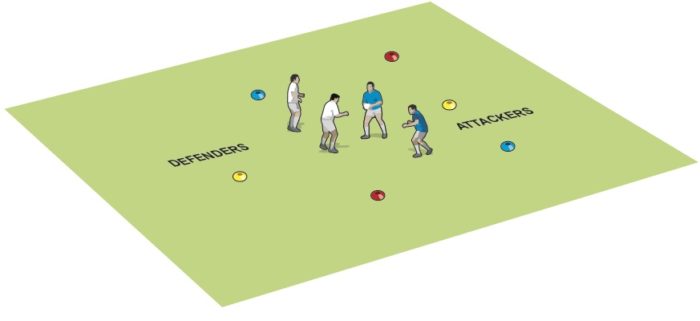
Trigger
When you call a colour
- The ball carrier and tackler become live.
- Support players round the coloured cone and then join the ruck/contact area.
Progressions
- Increase/decrease players.
- Enlarge/reduce the box to:
- - Favour the tackler bouncing to his feet looking to steal the ball.
- - Increase/reduce tackle intensity (smaller grid = less momentum and as such a lower impact)
- - Isolate the ball carrier from his support (he may need to fight to stay on his feet longer)/help the defence make turnovers.
Outcomes
Look for players make good decisions in and around the ruck, some examples are:
- Tackler gets to feet and disrupts or steals opponents ball
- Ball is lost but tackler is on his feet:
- - So defence set guard behind the ruck and next defender bounces out.
- - The tackler is not on feet so next defender sets guard.
Key points
Be strict on tackle height
As you can see we encountered some high tackles because of the proximity of players at the start.
- Reaffirm they need to go low for safety and legality.
- Concussions number one cause is high tackles
Even though it was not the intention of the exercise when offloads crept into the drill we allowed it - as it was an unforeseen solution to the exercise.
Ask players to work hard on communication, for example:
- When to and who will counter ruck, ball carrier or support?
- Who is guard?
- Bent knees ready to meet opposition support players as they enter the ruck?
- Are they supporting their own weight?
- Is the chin up scanning ahead with a straight back?
- What is the ball carrier doing on the ground?
- Are they in a strong L shape?
- Are they long?
- Are they safe?
- Are they placing the ball when the traffic is gone?
- Can they release and get to their feet and play again?
Note
As you can see we are doing this in fours, you may want to:
- Run multiple drills at once (we have a reduced squad but if you have more players make sure you keep them active)
- Ask those not involved to provide feedback.
- Increase the group size and play attack defence off what unfolds.
Newsletter Sign Up
Coaches Testimonials

Gerald Kearney, Downtown Las Vegas Soccer Club

Paul Butler, Florida, USA

Rick Shields, Springboro, USA

Tony Green, Pierrefonds Titans, Quebec, Canada
Subscribe Today
Be a more effective, more successful rugby coach
In a recent survey 89% of subscribers said Rugby Coach Weekly makes them more confident, 91% said Rugby Coach Weekly makes them a more effective coach and 93% said Rugby Coach Weekly makes them more inspired.
Get Weekly Inspiration
All the latest techniques and approaches
Rugby Coach Weekly offers proven and easy to use rugby drills, coaching sessions, practice plans, small-sided games, warm-ups, training tips and advice.
We've been at the cutting edge of rugby coaching since we launched in 2005, creating resources for the grassroots youth coach, following best practice from around the world and insights from the professional game.
More from us
© 2023 Rugby Coach Weekly
Part of Green Star Media Ltd. Company number: 3008779
We use cookies so we can provide you with the best online experience. By continuing to browse this site you are agreeing to our use of cookies. Click on the banner to find out more.
